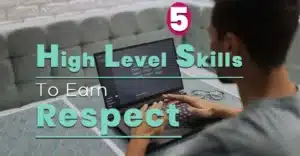Normally the process goes like this: You decide which kind of hobby you want to learn, do repetitive drills, and hope you master the hobby over a period of time. But does this logic really work?
Learning anything takes diligence. You need a well-structured framework to ensure you are successful. In other words, you need tools to help you learn faster, deeper, and easily manage the hard work of getting your head around difficult concepts. Remember, there are concepts everywhere. We learn concepts in school during academic work and so are they in every hobby you might think of. Following from this, we really do need a strategy to help us wrap our minds around the difficult ideas and concepts central to figuring out and mastering our hobbies.
- In this article, we will show you how to master any hobby using the Feynman technique. A technique developed by Richard Feynman, the world-renowned theoretical physicist. He was known for his numerous accomplishments in Quantum mechanics and Nanotechnology and even had a Nobel Prize for his work in Quantum Physics in 1965. But more specifically, he pioneered the most effective strategy for learning almost anything including hobbies. We will carry you step-by-step on how to apply this effective mental model to deep learning and internalizing the concepts and ideas of your chosen hobby. By the time you’re done reading this post, you will have a robust system to tackle any complicated task you would face when learning. Do check Top Richard P Feynman Quotes On Quantum Mechanics, Physics, And Life In General.
Overview of the Feynman Technique
The Feynman technique was developed by Richard Feynman as a learning strategy to help him learn and comprehend difficult subjects. He was a great scientist but an incredible explainer of complex ideas in a simple form. This he however brought to the public to also help the normal folk to learn about science and anything they wish to fully understand in their lives.
The Technique is divided into four broad interconnected repeatable steps. Using these steps, you can learn and understand anything you want. The first step deals with choosing what you want to learn which in this case a specific hobby you’re interested in learning about. Second, write a clear explanation of which topic you want to learn as if teaching it to a person who knows nothing about the topic. The Next step consists of reading your explanation out loud and trying to notice any gaps in your understanding of the explanation you’ve written. And finally, step four. When you find gaps in your understanding, you look for more information and explanation to fill in those gaps. However, the process is recursive and you will be going back and forth until you have a full understanding of all the concepts within the hobby you’re learning and practicing.
Why is it Effective?
Since the development of the Feynman technique by Richard Feynman, it has been used by many people over the years both in academia and in their daily life. What this technique helps you with is a deep understanding of the basic ideas and skills within a subject. And with those ideas, you move on to far more advanced concepts. Why is this important? For one, it makes the learning process less time-consuming. It gives you a can-do mindset and the urge to tackle far more difficult subjects. For example, if you take the time to truly understand the core ideas in math, say Algebra using this technique, it makes it far easier to comprehend advanced concepts like Calculus and Trigonometry. By the same token, hobbies are like subjects and contain skills you need to understand and master. They have theories, concepts, and ideas that form the basis for practice be it cooking, photography and also learning a new language.
Here are examples of notable people who have used this technique to learn and understand difficult subjects. The most notable is Brian Cox, a British theoretical physicist who loves this principle for learning. He even calls Richard Feynman a hero. According to him, with this technique, he has managed to learn complex topics within his field. Another notable name is Elon Musk. Although Elon Musk wouldn’t actually say he uses the Feynman Technique. However, the way this Eccentric Billionaire describes how he learns is very similar to the Feynman Technique. He said once in an interview that in learning he makes sure he completely understands what he is learning. First by looking at the general idea and then delving into particular aspects of the topic. This is how the Feynman technique works. Constant recursion to ensure you get what you’re seeking to understand and apply.
The Feynman technique, due to its recursive nature helps you to challenge yourself to explain to yourself hard concepts. In effect, you cover all the loopholes you may be missing in your learning of the concepts. This has been proven by neuroscientists that the more your brain is challenged, the faster and stronger it gets. And the faster it gets the better it grasps ideas and concepts.
This is how the Feynman technique helps you. Let’s dive into detail on how it actually works.
Feynman Technique Learning Steps
There are four specific steps to this technique. Let’s dive into the steps as applied to learning a hobby. It could be learning a new musical instrument, programming, martial arts, or learning how to draw or paint.
Do well to remember that at the core of this technique is simplicity. Taking a complex idea and making it simple enough that anyone could understand. As Albert Einstein once said, if you can’t explain it simply enough, then you don’t understand it.
Step1
Take a piece of paper and write out the idea related to the hobby you want to learn. Remember within every skill are rules and strategies. For instance, in learning how to program in python, you may what to understand what variables are. So, write it out on the blank paper as “What are variables and how important are they in a program? Learn as much as you can about the specific topic you’ve written out. Learn it with the view of teaching someone else.
Step 2
Then write a clear explanation of the concept you have written as if explaining out to a 12-year-old who knows nothing about programming. it should be in your own words. It could be your younger brother or sister or a colleague at work or even an imaginary audience. So, you for example write out an explanation for variables as “a container in a program for storing information”. At first, it might be a little vague. This helps you understand the fact that you properly understand what you thought you have learned. Also, crate graphical illustrations of the concept if possible. It makes the concept more tangible and vivid. For example, check this illustration of the variable.

In addition, look for problems or gaps in your understanding of the concept which will take you to the next step.
Step 3
After you’ve pinpointed the gaps in your knowledge about what variables are, you then move on to looking for sources like books or explanations from expert programmers on YouTube to fill that gap.
Step 4
Having sought information and explanations to fill your deficit in knowledge, you move back to step 3 to write a better, clear, and more concise explanation of the concept you wrote initially. This helps you think deeply and engage more with the concept. So, for instance, a clear explanation would be to use an analogy such as “a Variable is like a box within a computer program you use to store your data for processing”. If it doesn’t sound clear to you, repeat the necessary steps again. The Feynman technique is recursive in nature and leads ultimately to mastery learning of any task you set for yourself.
The Feynman technique allows you to create a web of explanations that give you a fuller and bigger understanding of your hobby. Why? Because even as you simply your ideas, you also come to understand that your understanding of data is fuzzy. To you, it calls up no meaning so it’s just a buzzword. From this realization, you start the whole process again and learn all you can about what data is as a concept in programming.
In addition, take this quote from Richard Feynman himself which is “The First Principle is to not fool yourself and the easiest person to fool is yourself”. This means that take agency of your learning and test every assumption you might hold until every idea or concept becomes clear in your mind. This is the path to mastering any hobby you might invest your time in.
Conclusion
Using this four-step-by-step process, you can learn and master any hobby you set your mind to. It is a powerful concept to open up all other concepts and you can give it a go and use the best Richard P Feynman Quotes while you are at it.
Preceding learning and mastering a hobby is finding one. So, check out this post on how to find a hobby.
Also, check our post on the Malcolm Gladwell’s 10,000 Hour Rule for mastering a skill.










